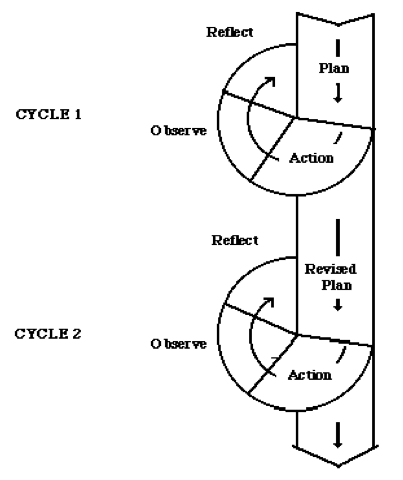Co-authors of this three-part blog on the Adaptive Enterprise are STS-RT Discovery Team members: Doug Austrom, Don de Guerre, Bob Laliberte, Helen Maupin, Bernard Mohr and Carolyn Ordowich. Click here for Part II and Part III.
Our problem is not the complexity of our models but the far greater
complexity of a world economy whose underlying linkages appear to
be in a continual state of flux. The continuity of emergent structure
derives not from stability but from adaptability. Alan Greenspan
Since 2004, the Discovery Team (the Research & Development arm of the Socio-technical Systems (STS) Roundtable) has engaged in a multi-stakeholder action research process. Action research or “learning-by-doing” is a co-learning process where a group of people attempts to
“. . . contribute both to the practical concerns of people in an immediate
problematic situation and to further the goals of social science
simultaneously. . . . [This] dual commitment . . . to study a system and
concurrently to collaborate with members of the system in changing it
. . . requires the active collaboration of researcher and client, and thus it
stresses the importance of co-learning as a primary aspect of the research
process.”*
The figure below illustrates a simple action research process through which STS practitioners would engage with their clients in attempting organizational transformation. Although only two cycles are depicted here, it follows that this process is a series of continuous learning loops whereby the learning is never complete.

The Adaptive Enterprise: Asking Questions
This action research process is being utilized by the STS-Roundtable Discovery Team, within its practitioner community, to ask and answer the following questions —
- What has historically been the STS value proposition (i.e., our unique offering with respect to cost and benefit)?
- What new forms of organizing are emerging in the world (i.e., the new context for our work as STS organization design practitioners)?
- How do we now articulate our value proposition in the new context of the 21st century?
- What are the implications of the above for STS design principles, values and processes?
To date, the STS Roundtable’s journey of discovery was built upon the following assumptions and beliefs about the guiding theory and tenets of our field of practice as STS Designers.
1. STS theory states that all organizations are:
a) open systems and as such need to continuously renew and adapt to the opportunities and demands in the environment.
b) socio-technical systems which function more humanely and effectively when these systems are jointly optimized.
2. STS theory led to the following value proposition offered by most STS practitioners to clients:
“We create and enable highly participative processes focused on:
a) building a business strategy that both responds to and influences the environment.
b) designing work organizations that jointly optimize their social and technical systems to deliver on the aligned business strategy.
c) designing, with intent, a high quality of working life for all members.
. . . which together accelerate the movement toward workplaces and lifespaces that work well and are good to work and live in.”
The research and development by the STS-Roundtable led to the following six discoveries:
- The need for continuous and rapid adaptation (i.e., flexibility of work systems) has increased exponentially.
- “Member” alienation (isolation, lack of engagement) continues to be a key issue compounded by a new context of significantly greater complexity and pace of change in the environment.
- Issues of coordination within and among the parts of an enterprise continue to be a key issue, again compounded by greater complexity and pace of change.
- The intentional use of socio-technical networks is becoming more prevalent as a means to achieve cost efficiencies, requisite flexibility and mutual adaptation.
- New design processes and technologies for meaningful participation are required in both the design and ongoing governance of the organization. (i.e., Design Thinking, Appreciative Inquiry)
- Three observable new forms of organization (see Adaptive Enterprises below) are evolving at the local, regional, national and global levels in response to the need for flexibility/adaptation.
Three Emerging Forms of Adaptive Enterprise:
1. Vertically-integrated Decentralized organization (VIDO)
2. Value realization network (VRN)
3. Issue-based eco-system (IBES)
Note: for an earlier iteration and description of these adaptive enterprises.
These three forms are descriptions of what we, as STS design practitioners, are seeing. We are not prescribing them as ideal organization forms. They are the new “contexts” within which people currently work and in which we have the opportunity to “design.”
At this point in its discovery process, the STS Roundtable Discovery Team proposes:
- each of these three forms of organization are attempts at being “adaptive enterprises” (some more successfully than others)
- most existing organizations are VIDO’s (to some extent)
- all VIDO’s have the potential to be part of VRN’s and IBES’s
- these three organizational forms fall on a learning and growth curve — moving from VIDO to VRN to IBES
These three emerging forms of organization present demands and opportunities for all organization design practitioners. However, from the perspective of STS tools, values and methods, participatively and jointly optimizing technical and social systems (versus only maximizing the technical system) would be helpful to —
- VIDO’s working on process redesign to build effective internal supply networks among their decentralized parts with ownership retained by one enterprise
- VRN’s working with multiple partners on shared mutual gain/outcomes with shared ownership
- IBES’s deliberations for building shared sense making and commitment to the resolution of an issue that impacts all members (climate change, etc.)
From a personal perspective, which of the forms have you experienced in your work life? What design elements for coordinating information and interactions brought you success?
Sources:
*Thomas Gilmore, Jim Krantz and Rafael Ramirez, “Action Based Modes of Inquiry and the Host-Researcher Relationship,” Consultation 5.3 (Fall 1986): 161.
**Dan MacIsaac, “An Introduction to Action Research,” 1995, http://www.phy.nau.edu/~danmac/actionrsch.html (22/03/1998).
To read more on Designing Adaptive Systems, click here Part II and Part III.




